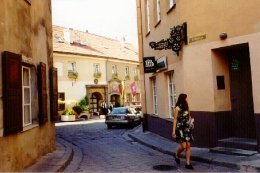‘A beautiful language that is not easy to imitate,’ ‘A language that bubbles like a river,’ and ‘An old but interesting language,’ are some of the phrases that students learning Lithuanian have used to describe it. Lithuanian is the official language of Lithuania. It is also recognized as one of the languages of the European Union. Approximately 2.9 million people speak the language in Lithuania, while another 200,000 people speak the language outside Lithuania. The language has two major dialects. This includes the highland Lithuanian and the lowland Lithuanian. These dialects are further sub divided into three sub dialects each. Lowland Lithuanian sub-dialect include west, north and south. Highland Lithuanian is divided into east, west and south. Each sub dialect is then divided into smaller units known as speeches.
Lithuanian is a very old Baltic language. It is related to Latvian and Old Prussian. Latvian and Lithuanian are not mutually intelligible. Lithuanian speakers can be found in the USA, UK, Canada, Argentina, Uruguay, Poland and Brazil. The language has managed to preserve most of its phonetical and morphological features over the centuries. This makes the language quite important when it comes to the study of Indo-European languages. Most Lithuanians can speak and understand Russian as well.
Lithuanian is written using Latin script. It has 32 letters of the alphabet. Diacritics are used. The first written text in Lithuanian was a catechism in 1547. The first ever Lithuanian dictionary was compiled in the 17th century. Lithuanian literature went into decline between 1864 and 1904 as the language was banned. Belarusian, Latin, Polish or Russian were the only languages that could be used and are still minority languages that are currently spoken in Lithuanian. When the ban was lifted, there was an increase of printed Lithuanian literature. Between 1918 to 1940, over 7,000 Lithuanian books were published. But due to the Soviet rule over Lithuania, most texts had a socialist model. When Lithuania gained its independence from the Soviet Union in 1991, different Lithuanian publications were introduced, including magazines, newspapers and scientific literature.
